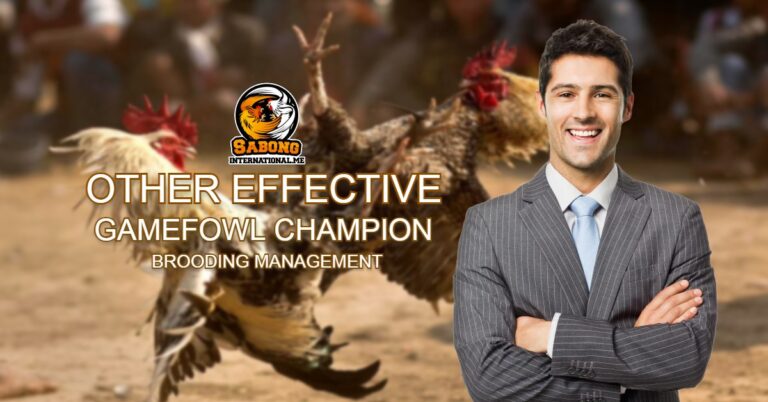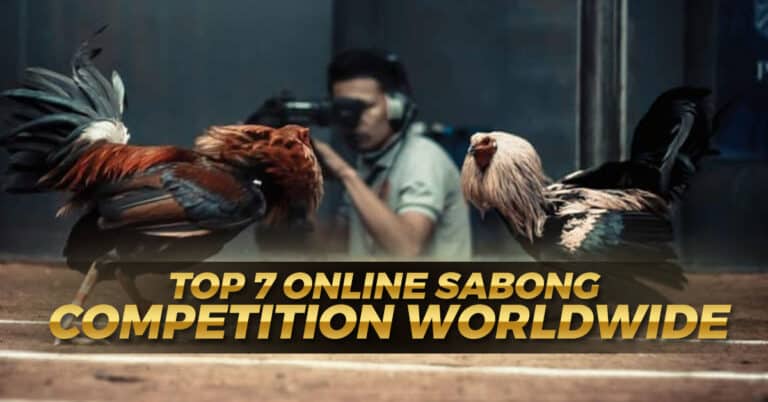The Effects of Steroid and The Infectious Coryza in Gamefowl
Sabong International gives advance Gamefowl conditioning, a necessary process to ensure that roosters perform at their best during cockfighting matches. Aside from proper nutrition, exercise, and rest, gamefowl breeders also use various supplements to boost their rooster’s performance. One of the controversial supplements that some breeders use is steroids. However, the use of steroids in advanced gamefowl conditioning raises ethical and health concerns, such as the risk of contracting Coryza disease.

Advanced Gamefowl Conditioning: Steroids on Gamefowls
Steroids are a type of organic molecule that plays a vital role in various physiological processes, including muscle growth and repair, metabolism, and inflammation regulation. In the context of advanced gamefowl conditioning, steroids are commonly used to enhance muscle growth and increase endurance, leading to better performance during cockfighting matches.
Even in the Philippines, where cockfighting is publicly authorized, there is currently no steroid use regulation for cockfighting. What does this imply? It indicates that some parties to a fight have an unfair edge over others. Given that cockfighting is an athletic competition, this is bad. Yet it makes sense for breeders to begin investigating this research and taking it into account as part of the advanced gamefowl conditioning program until the use of steroids in cockfighting is regulated.
Strength, power, and speed all increase as a result of anabolic steroid use. Yet, anabolic steroids have a variety of negative effects. Sterols, a natural anabolic steroid, is one intriguing alternative. Research reveals that steroids have no such negative effects. Natural steroid alcohols called sterols promote specific metabolic, immunological, and growth processes. Plant sterols are known as phytosterols, and animal sterols are known as zoosterols.
According to a recent study by RB Sugbo, using an anabolic steroid substance sold for use in-game birds for two weeks caused the breast to broaden, muscle mass to grow, fat levels to decrease, and other comparable effects. The roosters’ mental state, however, showed no signs of alteration.
In addition to increasing testosterone synthesis, phytosterols have advantages similar to those of anabolic steroids without negative side effects. In Gamma Oryzanol, phytosterol is found in significant amounts.
These strong substances have the power to increase strength, performance, and lean mass when employed as a part of the Gamecocks’ training program. They also have a potentiating effect on testosterone. The roosters will experience all the anabolic effects of carefully regulated androgen levels, such as high energy, improved protein synthesis, increased strength, and ideal performance.
How do Steroids Function?
We could get the correct answers in countless online journals, but the conclusion is that we need five times as much strength, power, and flexibility.
Slazbolak stimulates bone maturation and causes the development of pectoral muscles without causing an increase in body weight.
The advantages of employing Slazbolak include the following as well:

In gamefowl, MEEB causes aggression to emerge. Moreover, it enhances musculoskeletal reflexes, supports bone and muscle growth, and facilitates tissue repair. Stress also improves energy output. Stackable with Slazbolak.
Added advantages:
Gamefowl Steroids Alternative / Derivative
As these are all taken orally, you’ll get the best of both worlds in terms of effectiveness and convenience of usage. If you want to stack on performance-enhancing pills but are still wary of using steroids, you can choose the alternatives.
KQ Voltplex
Creatine, L-Carnitine, Ubiquinone, Vitamin E, and Thiamine are all present. VOLTPLEX KQ’s potent component mix offers endless power and energy.
Added advantages:
The Dangers of Steroid Use in Gamefowl
Steroid use in gamefowl breeding and competition might have negative health effects on the birds. In addition to other health issues, steroids can harm the kidneys and the liver. They may also provoke aggressive behavior and increase the risk of injury in the birds. Breeders and trainers who use steroids may believe that they are required to do so to be competitive in their sport, which increases the risk of addiction and dependence.
Short Term Effect
Stamina gains, greater muscle mass, and an increase in aggression are some of the short-term consequences of steroids in gamefowl. Because they improve the performance of their birds in the ring, these benefits are desired by gamefowl breeders. However, steroid side effects can potentially be harmful, including:

Long Term Effect
Steroids have more damaging long-term effects on gamefowl, which can result in permanent harm or even death. These outcomes comprise:
The Infectious Coryza
Chicken, pheasant, and guinea fowl infectious coryza is a particular, acute or chronic respiratory disease that most frequently affects mature or adult birds. Game bird flocks are more likely to experience coryza, also known as a cold. An acute, more quickly spreading disease with a higher percentage of birds afflicted may arise from infection, but a slow-moving, chronic condition that only affects a few birds at a time may develop from infection.
A gram-negative bacterium called Hemophilus paragallinarum is the culprit behind the illness. Even while the disease typically results in modest mortality rates, high cull rates, and reduced egg output can have a considerable negative impact on the economy. Furthermore, other illnesses like mycoplasmosis are frequently made worse by coryza and become more complicated.

Transmission
Coryza spreads through direct bird-to-bird contact, airborne infection from dust or respiratory discharge droplets, and tainted feed and water. It does not pass through the egg, however. Often, fresh birds that seem healthy but are harboring the bacteria, Coryza, transmit the illness into flocks (carrier birds). After being exposed to the disease for three days, susceptible birds typically show symptoms. Although they may seem normal, recovered people frequently continue to carry the disease for a very long time. All birds within a flock must be viewed as carriers once the disease has been spread.
Clinical symptoms
Characteristic signs include facial and wattle swelling, watery eyes, and foul-smelling nasal discharge. The eyes’ watery discharge frequently causes the lids to adhere to one another. The swelling may cause vision problems.
Diagnosis
Only by isolating and identifying the pathogen can the sickness be proven. Hemophilus paragallinarium is incredibly picky about the environment it needs to thrive, therefore it might be challenging to isolate.
Treatment
Coryza is a bacterial infection, like fowl cholera, and water-soluble antibiotics or antibacterials, including sulfadimethoxine, erythromycin, and tetracyclines, are only marginally effective at reducing death. Drugs won’t completely cure the illness, though, because recovered birds still have the sickness and can pass it on to new birds. Be aware that beginning on January 1, 2017, all medically essential antimicrobials intended for use in or on feed require a VFD, and those intended for use in drinking water require a prescription from a qualified veterinarian. This is due to the complete implementation of the Veterinary Feed Directive (VFD).
Prevention
the sole sensible, successful strategy for preventing contagious coryza. The greatest ways to prevent a coryza outbreak are good management, sanitation, and an all-in, all-out strategy. Remove susceptible and contaminated birds from contact. In case of an epidemic, keep carrier and afflicted birds apart from the flock.
If at all possible, raise your replacement poultry, or only introduce young or adult birds from reputable, clean sources that are free of the disease. Properly dispose of dead birds. The only method to stop a disease outbreak if it does happen is to completely depopulate the area, and then thoroughly clean and disinfect it. It is also possible to buy a vaccination. It needs two shots—the first at 8–10 weeks and the second at 4 weeks—so that it is fully protected.
Conclusion
For many years, there has been debate concerning the use of steroids in the breeding and combat of gamefowl. While steroids can improve the performance of the birds and raise their likelihood of winning battles, they can also have detrimental effects on the health of the birds. Steroid use raises the risk of injury and can result in aggression, dependency, and addiction. Consider natural vitamins, a healthy diet, and regular exercise as alternatives to steroid use. Although it is unclear how long steroids will be used in gamefowl breeding and competition, it is crucial to put the health and welfare of the animals first.










